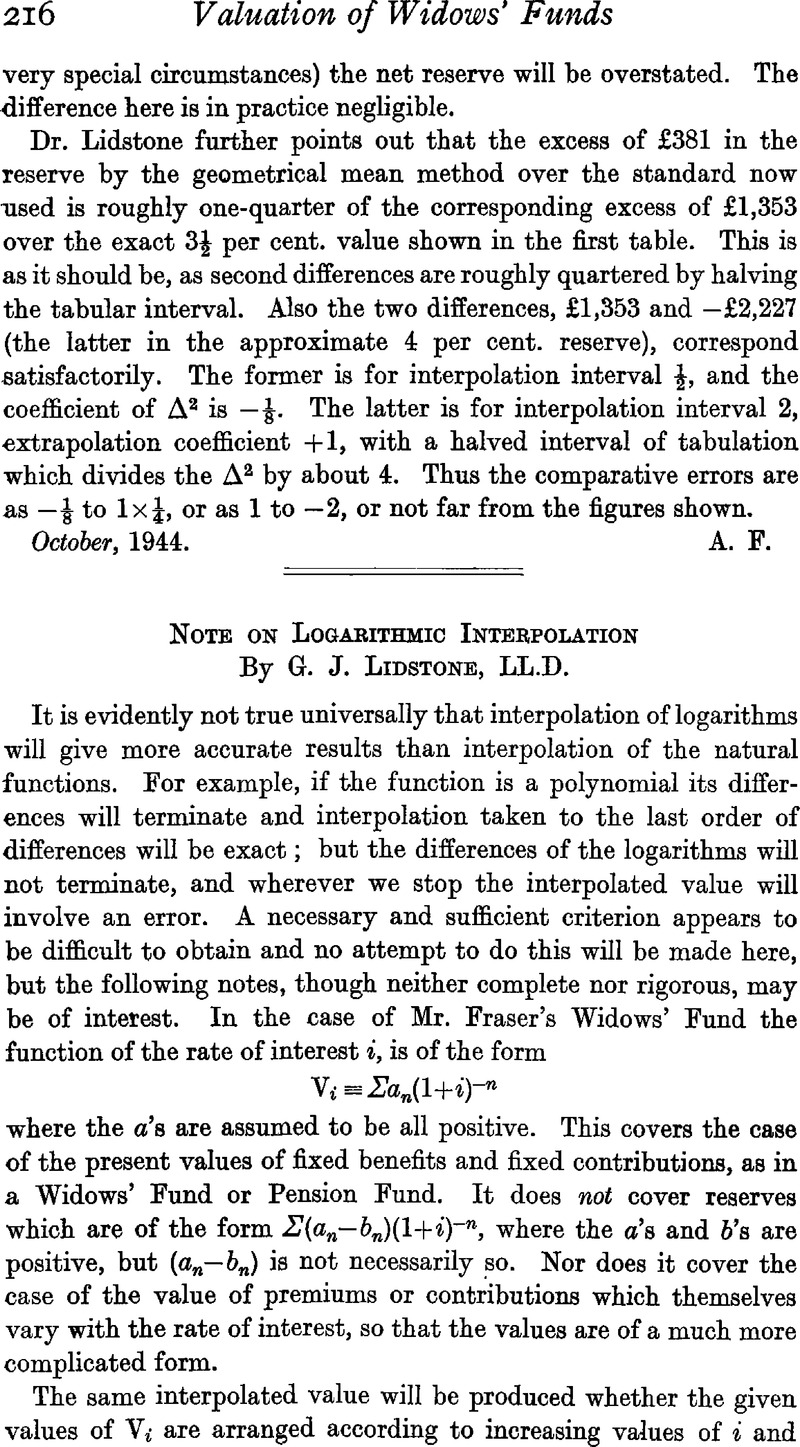Article contents
Note on Logarithmic Interpolation
Published online by Cambridge University Press: 07 November 2014
Abstract

- Type
- Other
- Information
- Copyright
- Copyright © Institute and Faculty of Actuaries 1945
References
page 218 note * If the terms are arranged in the reverse order the corresponding condition is that λ(n) and V(n) have the sign of (-)n.
page 218 note † An illustration only, for in this particular problem it is better to use Lever's method (J.I.A., vol. lii. p. 171) of equating ax to ![]() and interpolating for n. In our example this gives almost an exact result. But this or a similar method is not available for functions in general.
and interpolating for n. In our example this gives almost an exact result. But this or a similar method is not available for functions in general.
page 218 note ‡ More generally we may use log10 (K +mantissa of log10V), where K is a small integer chosen to quicken the convergence of the differences.
- 1
- Cited by


